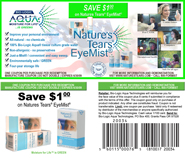
Blepharitis and Dry Eye
Understanding Dry Eye and Blepharitis
Lipids (fatty oils) protect the tear film from excessive evaporation. Individuals with low lipid production exhibit high tear film evaporation, low tear flow and other dry eye symptoms.
Inflammation plays a central role in dry eye. One type of inflammation strongly associated with dry eye is Blepharitis, or eyelid inflammation. The majority of blepharitis patients also have dry eye symptoms. Blepharitis is very common, with many causes, but the lipid secreting meibomian glands, located within the eyelid, are almost always involved.
Several important dermatologic conditions and diseases, such as acne rosacea (reddening and inflammation of the nose and forehead), are known to increase both eyelid and ocular surface inflammation. Seborrheic dermatitis is associated with scaling skin lesions, dandruff and inflammation that also affect the eyelids. All dry eye conditions are influenced by genetic mechanisms that have not been adequately identified.
Three primary types of blepharitis.
- Obstructive. This condition is marked by hardening (hyperkeratinization) of the eyelid margin and meibomian gland ducts within the eyelid. The flow of lipids produced by the meibomian glands are not only obstructed when this condition is present, but the lipids are thicker. Since the lipids protect the tear film from excessive evaporation, individuals with blepharitis exhibit high tear film evaporation, low tear flow and other dry eye symptoms. Examination of the eyelid could reveal missing glands that had previously been obstructed and were subsequently absorbed.
- Seborrheic. Individuals with seborrheic dermatitis (patches of red, inflamed skin caused by overproduction in the skin's sebaceous or oil glands), often exhibit seborrheic blepharitis as well, marked by increased (rather than decreased) lipid production from the meibomian glands. Lipids are not obstructed or thickened and tear film evaporation is usually not elevated. Eyelid examination reveals normal morphology of the meibomian glands. However, patients with seborrheic blepharitis have dry eye more frequently than the normal population.
- Bacterial. Bacterial overgrowth on the eyelid margin also creates inflammation and contributes to eyelid hardening, causing meibomian gland obstruction. All eyelids have bacterial flora and there is little difference among individuals as to the types of bacteria that eyelids harbor. Genetic mechanisms are also a factor since the level of free cholesterol partly determines the nature and extent of bacterial overgrowth.









